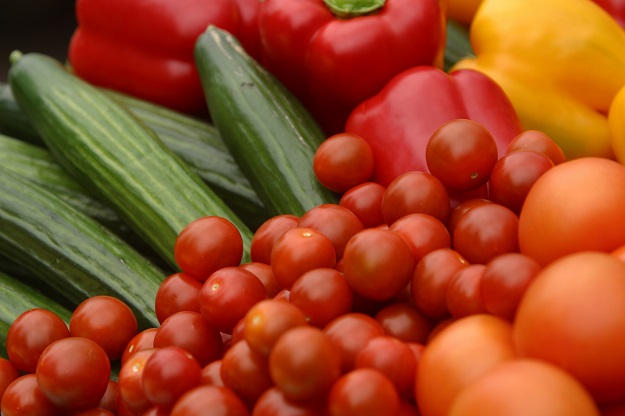
The main point behind growing your own vegetables is how much better they taste fresh from the garden. The only fail-safe way to guarantee harvesting vegetables at the optimal time is the taste test. Keep in mind that great flavor isn’t a simple matter of size or color. Without the right combination of soil, sun, and water many vegetables can vary greatly in taste and performance.
There are some rules of thumb to guide you on when your vegetables are ready to be picked. Most vegetables are harvested just before full maturity, for maximum flavor and the most pleasant texture. The following criteria can help you evaluate when whether your vegetables are ready for harvest.
Asparagus
Begin harvesting when spears are 6-8 inches tall and about as thick as your small finger. Snap them off at ground level and new spears will continue to grow. Stop harvesting about 4-6 weeks after the initial harvest, to allow the plants to produce foliage and food for themselves.
Beans (Snap)
Pick before the you can see the seeds bulging. They should snap into two pieces easily. Check them daily because it doesn’t take long for beans to go from tender to tough.
Beets
You can harvest and eat the green tops that you thin out of the rows. Beets are really a matter of personal preference when it comes to the right size for harvesting. They are ready any time after you see the beets shoulders protruding at the soil line.
Broccoli
Some people eat the unopened flower buds of broccoli, so check frequently, especially as the weather warms up, to ensure you don’t let the flower heads bloom. Don’t expect your home-grown broccoli to get to the size of supermarket heads. Harvest the buds when they are about the size of a match head.
Brussel Sprouts
The sprouts will mature from the bottom up. You can begin harvesting once the sprouts are at least an inch in diameter. Harvest by twisting off or cutting the sprout from the stem.
Cabbage
The cabbage head will feel solid when gently squeezed. Cabbage needs to be harvested when it reaches maturity, or it will continue to grow and split open.
Carrots
Carrots can be hard to judge. The tops of the carrot will show at the soil line and you can gage when the diameter looks right for your variety. If the diameter looks good, chances are the length is fine too, but you will need to pull one to be certain. Carrots can be left in the ground when they mature. A light frost is said to improve and sweeten the carrot’s flavor.
Cauliflower
As with broccoli, your home-grown cauliflower heads will probably never match supermarket size. Harvest when the head looks full and while the curds of the head are still smooth.
Corn
About 3 weeks after the silks form, they will turn dry and brown. The kernels should exude a milky substance when pricked.
Cucumber
Cucumbers race to the harvest with zucchini. Check daily and harvest young. Timing and length will vary with variety. The fruits should be firm smooth. Over ripe cucumbers can be very bitter or pithy, even before they start to turn yellow.
Eggplant
Slightly immature fruits taste best. The fruits should be firm and shiny. Cut rather than pulling from the plant.
Garlic
The garlic tops will fall over and begin to brown when the bulbs are ready. Dig, don’t pull, and allow them too dry before storing. It’s best to simply brush off the dirt, rather than washing.
Kale
Kale leaves can be harvested throughout the season with the flavor being best in cooler weather. They should be deep green with a firm, sturdy texture.
Kohlrabi
For the best texture, harvest once the kohlrabi bulb has reached about 2-3 inches in diameter. The bulbs become tougher as they grow and age. Pull or slice at the base.
Leeks
Harvest leeks when they are about one inch in diameter.
Lettuce (Head)
Harvest once the head feels full and firm with a gentle squeeze. Hot weather will cause it to bolt or go to seed rather than filling out.
Lettuce (Leaf)
Harvest the outer leaves one the plant has reached about 4 inches in height. Allow the younger, inner leaves to grow. Leaf lettuce can be harvested in this fashion for most of the summer.
Peppers
Harvest them when the outside is firm and changing colors. There are many varieties of peppers. Most common peppers (Bell variety) will start green and turn red if left on the plant.
Tomatoes
Harvest the tomatoes when the outer skin color of the fruit turns orange. To add life to the fruit, they can be picked earlier while they are still green and put in a brown paper bag. This process will add approximately one week to the fruit’s life.
Samantha Michaels works for a company that offers environmentally friendly “green” products.
Related Articles & Free Email Newsletter
3 Great Types of Year-Round Greenhouse Produce




Comment here